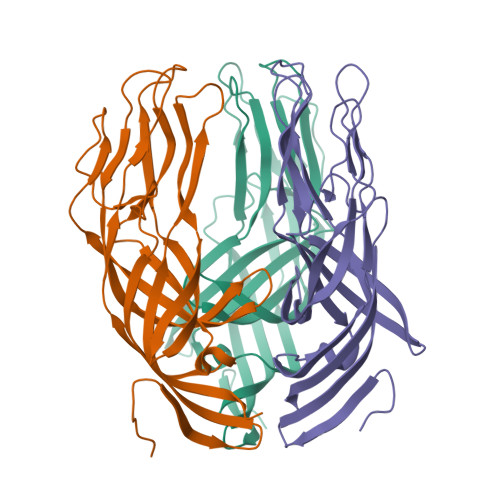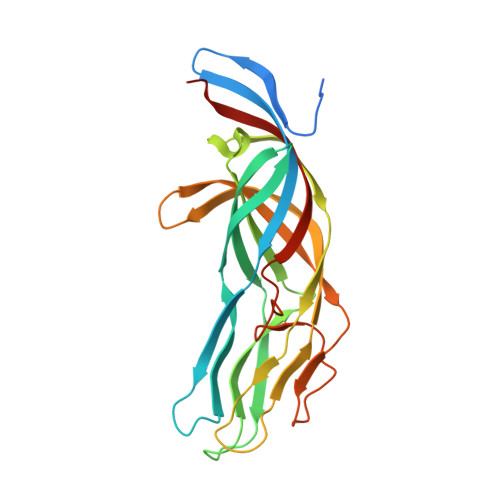Alternative intermolecular contacts underlie the rotavirus VP5(*) two- to three-fold rearrangement
Yoder, J.D., Dormitzer, P.R.(2006) EMBO J 25: 1559-1568
- PubMed: 16511559
- DOI: https://doi.org/10.1038/sj.emboj.7601034
- Primary Citation of Related Structures:
2B4H, 2B4I - PubMed Abstract:
The spike protein VP4 is a key component of the membrane penetration apparatus of rotavirus, a nonenveloped virus that causes childhood gastroenteritis. Trypsin cleavage of VP4 produces a fragment, VP5*, with a potential membrane interaction region, and primes rotavirus for cell entry. During entry, the part of VP5* that protrudes from the virus folds back on itself and reorganizes from a local dimer to a trimer. Here, we report that a globular domain of VP5*, the VP5* antigen domain, is an autonomously folding unit that alternatively forms well-ordered dimers and trimers. Because the domain contains heterotypic neutralizing epitopes and is soluble when expressed directly, it is a promising potential subunit vaccine component. X-ray crystal structures show that the dimer resembles the spike body on trypsin-primed virions, and the trimer resembles the folded-back form of the spike. The same structural elements pack differently to form key intermolecular contacts in both oligomers. The intrinsic molecular property of alternatively forming dimers and trimers facilitates the VP5* reorganization, which is thought to mediate membrane penetration during cell entry.
Organizational Affiliation:
Program in Virology, Laboratory of Molecular Medicine, Harvard Medical School, Children's Hospital, Boston, MA 02115, USA.
















